
Many of Montenegro's highest peaks are located in the Durmitor Mountains. The range borders Serbia and Bosnia with twisting hairpins cutting through rocky peaks and lush landscapes, reaching down to turquoise blue river canyons.
Montenegro offers similar ascents and views to the Italian Dolomites and Austrian Alps, except with just a handful of hikers for company during peak summer season, so you can have the roads to yourself. Durmitor is a hidden gem for quiet, relaxed exploring. Felix and Jago were accompanied by Raw Cycling Magazine, as part of their Ride Among the Giants project, which explores big mountain landscapes across Europe.
Image by @brazodehierro.
Katuni and the locals
The group chose to stay at 1,500m north of Zabljak where Katuni pepper the landscape. The wooden huts were traditionally used by shepherds who bring their sheep up to graze the highland pastures in summer. There are plenty available on Airbnb that make a unique base for accommodation.
Up at the highland pastures, it is possible to spot chamois (goat-antelopes) on the higher slopes, and golden eagles and griffon vultures soaring overhead.

Bobotov Kuk
Bobotov Kuk is Montenegro’s highest peak at 2,523m. It dominates the landscape and only experienced hikers can trek to its peaks. Bobotov Kuk is surrounded by several lesser peaks that side around 2,000m. There are several Tarmac passes that riders can take and cross beneath the shadow of the sheer rock.
Riding southwest or south from Zabljak will loop clockwise around Bobotov Kuk. The routes passes Black Lake below the main road. For those looking for a late lunch or rest day ride, Black Lake is overlooked by a restaurant, making it a perfect stop.

Lake Piva
Stretching 45km in length, the lake was created when the Mratinje Dam was constructed on the Piva River. On the bottom of the lake there is the old town of Plužine.
Riding routes will often involve Lake Piva in some form or another; by crossing the mountains and overlooking the huge turquoise body of water from the mountain pass, before looping around the peaks and back into the park, or by descending down to the lake and following alongside towards the Tara Canyon, where you'll ride beside European black pine, which can reach heights of over 160ft.
Reflections from the trip
Jago Leckie shares his experience of the trip over on the Angry Pablo journal. Check it out here.









Riding Routes
Riding routes were devised ahead of the trip by Raw Cycling Magazine.
Route 1
The toughest route is an 80 mile loop of Bobotov Kuk peak, including descending down to Lake Piva and back up, clocking 4,000m of climbing. The route uses most of the TT4 cycle route.
See the route here
Route 2
An equally long day out but with more lush alpine scenery is to cross the mountain range closer to the Black Lake using the TT2 route and connect to the Lake Piva Dam, then continue along the lake to the border with Bosnia, picking up Tara Canyon road. The 88 mile route drops down significantly and more climbing awaits on the ride back to Zabljak.
See the route here
Route 3
The Tara Bridge loop takes riders south and southeast on a 40 mile, clockwise route through rolling terrain. There is a section of out and back to view the stunning Djurdjevic Tara Bridge. At the bridge there are various cafes and shops. The route uses quiet farmers road that are all paved and passes two small lakes.
35 mile short route
Route 4
The 80 mile route loops anti-clockwise through the mountain range, climbing up before dipping down between a gorge to a small blue-green mountain lake. The route climbs up to 1,800m to a viewpoint of the Durmitor mountains. A long descent takes riders on farmer roads down to the Tara Bridge and back.
80 mile long route
Route 5
Black Lake route is a simple 10 mile route and is ideal for a rest day. If you have a gravel bike there are some alternative routes back from the lake.
See the route here


How to get there
Fly to the inland capital, Podgorica, which is serviced by all major low-cost airlines from London or Manchester airports. Hiring a car is easiest as there are no public transport options.
En route, stop at Lake Biograd within the Bjelasica mountain range, with snow-capped peaks, Alpine meadows and lush forests. The lake is an easy two-mile stroll, or ride around its shores, through beech, sycamore and ash, and there’s a waterside restaurant, plus kayaks to hire.
If you don't want to hire a car, you can ride 135km from Podgorica to our suggested base town of Zabljak. There are some fast main roads used by trucks and you will mostly be climbing up into the Bjelasica National Park and then up again into the Durmitor National Park.
When to go, where to stay, local foods
When? The Montenegrin coast enjoys a Mediterranean climate, with hot, dry summers and mild winters, while the mountainous hinterland has a continental climate, with warm summers and cold, snowy winters. In the mountains at 1,500m temperatures never reach more than 26°C, but lower down at river level it is much hotter.
Rafting down the River Tara is possible from spring to early autumn. The water volume is at its highest in April and May (creating class IV rapids), while summer is calmer (class III rapids).
Where? The small town of Zabljak is a ski resort in the winter and there are plenty of small supermarkets, shops and cafes in the area.
Felix and Jago and the Raw Magazine crew stayed at this Airbnb.
Eat? Try home-cured pršut (similar to Italian prosciutto), river trout, roast lamb, artisan cheeses, and various gruels, such as kačamak (made from ground maize, potato and cheese). For snacks, bakeries sell freshly-baked filo pastry pies, including burek (filled with minced meat) and zeljanica (filled with spinach and curd cheese), which locals pair with drinking yogurt. Also popular are čevapi (minced meat rissoles) served in warm lepinja (pita bread) with ajvar (aubergine and red pepper relish). You can also find the classics like pizza and pasta dishes inspired by Venetian cuisine.
Exploring the mountain on the Condor Baracchi

Tuned for long days
The Baracchi is made using the same lightweight, race-winning carbon as our race bikes. We incorporated our nano carbon technology to keep the road ahead rattle-free. Nano carbon, with its irregular shapes, disperse the jarring bumps and strength-sapping vibrations from rough mountain roads, keeping your body feeling fresh and stay fast.

Endurance geometry
The Baracchi has an ergonomic endurance riding position, with a slightly longer wheelbase compared to our race-bike models, and adjusted head tube angle to take the pressure off your body, especially when you're in a fixed position, climbing long mountain passes. Perfect for ultra long days exploring.
Discover the model

Lightweight full carbon fork and 32mm tyre clearance
The ultralight carbon fork provides not only stability but the control you need on technical mountain descents. The frame has clearance for 32mm tyres, giving you maximum versatility and fast rolling resistance on valley roads.
Discover the model



